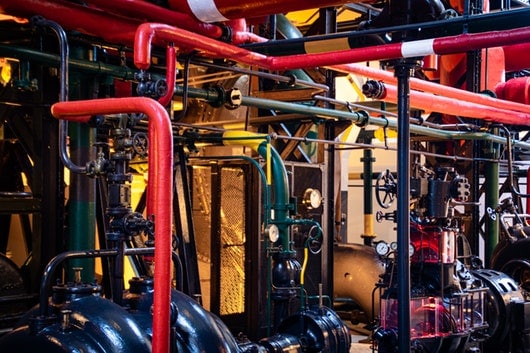Augmented reality (AR), virtual reality (VR) and digital twins are on the cusp of enabling businesses to visualise key insights about their operational technologies. The ability to view both physical and virtual environments are an untapped boon for industries like manufacturing, transportation, and energy, where heavy machinery and other physical equipment often lies at the centre of business operations.
It’s becoming increasingly imperative to merge these physical assets into IT applications and infrastructure to improve operations, customer service and produce business-critical insights that help companies gain a competitive advantage. That is where digital twins, AR and VR each have a role to play in helping enterprises achieve full Industry 4.0 transformation and automation.
Digital twins and AR/VR defined
The term “Industrial Internet of Things” (IIoT) refers to the use of intelligent assets, such as sensors, to connect other physical assets to the network for collecting and analysing data in industrial settings. But technologies like digital twins, VR, and AR help organisations pursue industrial automation in a very different way.
Each of these technologies requires the digital replication of an asset to help organisations and employees better understand it, and therefore make more educated and analytics-driven decisions.
A digital twin is a virtual representation of the “state” of a complex physical device or system that feeds data back and forth between an asset and its “twin.” The asset could be a car, airplane engine or even a windmill turbine. As more complex devices are connected and continue to produce data, having a digital representation of an asset gives enterprises the ability to further optimize real-world deployments and create “what if” testing scenarios for their solutions by providing an opportunity for comparison.
This virtual view of often high-value equipment also helps organizations perform predictive maintenance, which in the long-run, can help reduce costs, monitor assets, reduce downtime, and create entirely new products.
In fact, Gartner predicts that half of large industrial companies will use digital twins by 2021 – making way for billions of devices to be represented as digital twins in the coming years.
Many people are more familiar with VR as it relates to consumer applications like gaming. However, 3D virtual instances of reality can also serve as a user interface to help workers easily navigate and manipulate the IIoT world. VR can assist with training, improving worker safety, remote assistance, and product development – all scenarios where users need to “see” a 3D object without being in its physical presence.
For instance, a manufacturer could use VR to revolutionize the factory floor by designing and building entire vehicles in a virtual state that later go into production. In addition, VR could provide a more immersive onboarding experience to new workers that would lower the cost and provide higher-quality training to an employee.
Not to be confused with VR, AR superimposes digital images on a screen view of the real world to show a composite of the two, typically with the help of a wearable or mobile device. AR has shown great success in customer experience applications, but one potential high-value use is maintenance, as the technology can be used to create intuitive visual guides for troubleshooting and repair jobs. Imagine an engineer on the factory floor troubleshooting an issue with a robotic arm. Just point, aim and follow the instructions presented on your mobile phone to solve the problem.
Achieving lasting benefits with AR, VR and digital twins
Successful implementations of these technologies are heavily dependent on the IT network infrastructure. Each of them is data-intensive, and drives new bandwidth, latency, and performance requirements. These technologies may also require investments in processing, storage, and analytics solutions at the network edge.
In addition, to create real and lasting benefits it’s important for organisations to target their investments, and only deploy new technologies that yield clear business benefits. All three technologies have wide-ranging potential future applications. But at the moment, digital twins are most useful for diagnostics, predictive maintenance, and product development, while VR and AR have demonstrated their utility for training and equipment maintenance.
As Industry 4.0 continues to incorporate technology like AR, VR and digital twins, it will ensure that processes and production can be better analysed, serviced and updated in real-time by humans while bringing in a new age of efficiency and connectivity to the IIoT.
Stuart Hendry, vice president, Transportation, Energy & Public Sector, Asia Pacific Japan, Nokia



